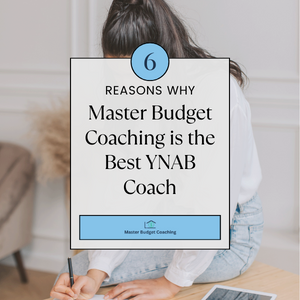Spendfulness, a state of alignment between how you spend your money and the life you want to live, is the new philosophy behind the popular budgeting software You Need a Budget, or YNAB.
Gone are the four simple rules; Give Every Dollar a Job, Embrace Your True Expenses, Roll With the Punches, and Age your Money. Now, the cornerstone for Spendfulness is to Give Every Dollar a Job and ask yourself these five questions:
- What does this money need to do before I’m paid again? (the REALITY question)
- What larger, less frequent spending do I need to prepare for? (the STABILITY question)
- What can I set aside for next month’s spending? (the RESILIENCE question)
- What goals, large or small, do I want to prioritize? (the CREATION question)
- What changes do I need to make, if any? (the FLEXIBILITY question)
Mastering Your Budget with YNAB: Key Questions to Guide Your Financial Planning
While YNAB’s four rules were designed to help users manage their finances effectively, some found them restrictive. The structured approach felt like it limited flexibility and spontaneity in spending. However, rules are meant to be broken, and a more personalized methodology involves asking key questions about how you want to budget your money. By focusing on what your money needs to do before your next paycheck, preparing for larger expenses, setting aside funds for future spending, and prioritizing your financial goals, you can create a budget that feels more intuitive and empowering. This approach allows you to tailor your budget to your unique needs and goals, making it more adaptable and less rigid. Let's explore these new five questions and how to answer them as you work on your YNAB budget.
1. What Does This Money Need to Do Before I’m Paid Again?
This question helps you prioritize your immediate financial obligations. Think about your regular expenses that need to be covered before your next paycheck.
Detailed Examples:
- Rent: If your rent is $1,200 and due on the 1st of the month, and you get paid on the 15th, ensure you have allocated $1,200 in your budget to cover it.
- Utilities: Set aside funds for your electricity ($100), water ($30), and internet ($50) bills. If these are due mid-month, make sure you have the total $180 ready.
- Groceries: Budget for your weekly grocery shopping. If you spend about $100 per week and you have two weeks until your next paycheck, allocate $200.
- Transportation: If you spend $60 on gas every two weeks, ensure you have this amount set aside.
- Childcare: If you pay $300 bi-weekly for daycare, make sure this is covered.
2. What Larger, Less Frequent Spending Do I Need to Prepare For?
Some expenses don’t occur monthly but can significantly impact your budget if you’re not prepared. Planning for these in advance can save you from financial stress.
Detailed Examples:
- Car Maintenance: If your car needs servicing every six months at a cost of $600, start setting aside $100 each month.
- Insurance Premiums: If your annual home insurance premium is $1,200, save $100 each month to cover this expense.
- Holiday Gifts: If you plan to spend $600 on holiday gifts, start saving $50 each month starting in January.
- Property Taxes: If your property taxes are $2,400 annually, set aside $200 each month.
- Medical Expenses: If you anticipate needing $500 for dental work in six months, save about $85 each month.
3. What Can I Set Aside for Next Month’s Spending?
YNAB encourages you to think ahead. By setting aside money for next month, you create a buffer that can help you manage unexpected expenses more easily.
Detailed Examples:
- Next Month’s Rent: If possible, start saving for next month’s rent now. If your rent is $1,200, try to set aside $600 from each paycheck if you’re paid bi-weekly.
- Subscriptions: If you have monthly subscriptions like Netflix ($15), Spotify ($10), and a gym membership ($30), allocate $55 for next month.
- Emergency Fund: Building an emergency fund can provide peace of mind. Aim to save $100 each month until you reach a goal of $1,000.
- Utilities: If your average monthly utility bill is $180, set aside this amount for next month.
- Groceries: If you spend $400 on groceries each month, try to set aside this amount for next month’s shopping.
4. What Goals, Large or Small, Do I Want to Prioritize?
Setting financial goals gives you something to work towards and can motivate you to stick to your budget.
Detailed Examples:
- Vacation: Plan a trip by saving a specific amount each month. If your vacation will cost $2,400 and you want to go in a year, save $200 each month.
- New Gadget: If you want to buy a new phone for $1,000 in six months, save about $167 each month.
- Debt Repayment: Prioritize paying off high-interest debt. If you have a credit card balance of $3,000 with a high interest rate, aim to pay $500 each month to clear it in six months.
- Home Renovation: If you plan to renovate your kitchen for $10,000 in a year, save about $833 each month.
- Education Fund: If you want to save $5,000 for a course in two years, set aside about $208 each month.
5. What Changes Do I Need to Make, If Any?
Regularly reviewing your budget helps you stay on track and make necessary adjustments. Life changes, and so should your budget.
Detailed Examples:
- Income Changes: If you get a raise from $3,000 to $3,500 per month, adjust your budget to reflect your new income. Allocate the extra $500 towards savings or debt repayment.
- Spending Habits: If you notice you’re spending $200 on dining out each month but want to reduce it to $100, plan more meals at home and allocate the saved $100 towards another goal.
- New Expenses: If you’ve taken on a new expense, like a $50 monthly gym membership, ensure it fits into your budget without compromising other priorities.
- Unexpected Bills: If you receive an unexpected medical bill of $400, adjust your budget to cover this by reducing discretionary spending or using your emergency fund.
- Lifestyle Changes: If you decide to adopt a pet, budget for initial costs like adoption fees ($200) and monthly expenses like food and vet visits ($50).
Conclusion
Giving every dollar a job brings awareness and intention to your spending. You build confidence in the decisions you make when you spend money and you have a feeling of contentment. With clarity and control, you'll realize a transformational relationship with money. Spendfulness; learn to express yourself, love how you spend, and thrive well beyond money!
By asking yourself these questions and using YNAB to track your finances, you can create a budget that works for you. Remember, budgeting is a dynamic process. Regularly review and adjust your budget to reflect your current financial situation and goals. Happy budgeting! 🎉








